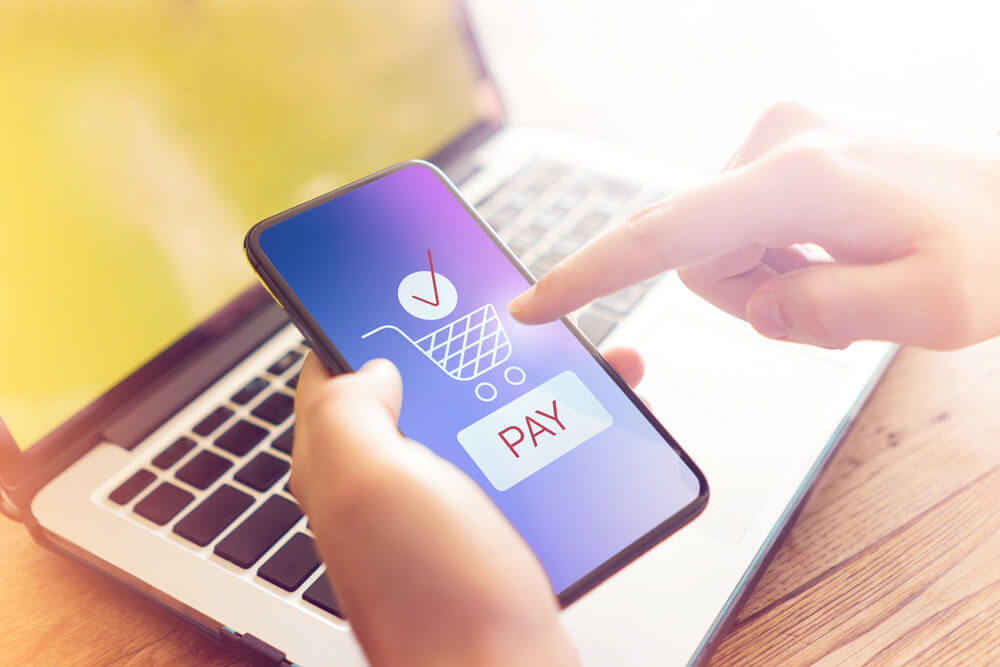
The Rise of Social Media Checkout: What You Need To Know
Recent developments in the social media landscape have made shopping a more streamlined experience than ever before. Social media platforms, such as TikTok and Instagram, now offer ecommerce, helping brands promote their products.
Social media checkout is easier than a dedicated shopping platform because customers can buy from the app. Here are some points to consider if you want to use this feature to drive sales:
- Understanding how social media checkout works.
- Benefits and advantages.
- How to set everything up.
- Providing leverage for marketing and advertisements.
- Utilizing analytics and insights.
Read on and learn how to use this feature properly to elevate your business. Let’s go!
If you want to learn how Digital Authority Partners can increase your PPC effectiveness, watch this video!
How Social Media Checkout Works
Businesses use their social media presence as one of the primary ways to reach their customers, and social media checkout allows ecommerce businesses to simultaneously provide their services.
Quick access to product catalogs and immediate payment processing provide unparalleled convenience and usability, encouraging customers to interact more with brands.
This feature makes it possible by collaborating social media platforms with ecommerce platforms, such as BigCommerce and Shopify, allowing seamless access to product catalogs. The app also handles payment processing, meaning customers can finish the transaction without moving to another platform.
Social Media Checkout Benefits for Businesses
Social media checkout makes it possible to streamline the sales of a business in multiple ways. For instance, integrating product catalogs and payment processing reduces the steps involved in purchasing, allowing higher sales conversion rates.
This simplification of the purchasing process also encourages more impulse buying from consumers. Customers also have a decreased chance of abandoning the items in their cart due to the simplicity of payment methods.
Finally, customers can be more encouraged to return due to the enhanced experience. With traditional marketing strategies, social media checkout can become a great tool to effectively widen your audience.
Setting up Social Media Checkout

Social media platforms require some prerequisites before you can start selling products. Setting up Facebook and Instagram Shops might be different compared to setting up TikTok Commerce, but all of these platforms have a lot of requirements in common.
1. Have a Business Page or Account
The first thing that social media platforms require you to have is a business page or account. However, the benefits of a business account are greater than just being able to sell your merchandise.
For example, a Facebook Business Page gives you an enhanced online presence through its social media business tools, including the capability to directly engage with customers and create targeted ads.
2. Set up Your Catalog
A seamless shopping experience for the user requires an updated product catalog on the social media platform you plan to use. Depending on the app that you plan to use, there can be various options for populating your digital inventory.
Using Facebook Shops as an example, you can manually input the products to your shop or import them using spreadsheets or other data feed types. However, linking to a partner ecommerce platform is usually the most efficient for most businesses. Not only does it simplify the syncing of inventory, but it also automatically updates whenever the stock of items changes.
3. Optimize Product Listings
While you can technically start selling your products after setting up the catalog, optimizing your product listings is essential to encourage customer conversations and boost business activity.
Take time to check the names and descriptions of your products and provide as much information as possible to help reach more customers. All the extra details you provide help your business stand out more, especially in a saturated market.
4. Check Payment Options
Providing customers with a proper payment solution drives ecommerce sales through social media. Since social media checkout aims to provide a seamless end-to-end experience, having multiple payment options available might encourage customers to spend more on your products.
Most social media platforms have multiple payment options that are natively available and usually include credit cards, debit cards, and PayPal. These payment methods generally require minimal effort, making it easy for businesses to focus on their products and marketing instead.
5. Verify End-to-End Transaction
Ensuring that the whole purchasing process works without issues guarantees a positive experience for your customers. Before letting the customers use your social media checkout service, guarantee that everything works from your end first.
Additionally, comprehensive feedback from users can help you decide how to improve this service. Giving your customers incentives for describing their experience and quickly implementing effective changes might give you an advertising edge over competitors already using this feature.
Enhancing Marketing Strategies through Social Media Checkout

Social media platforms have been the go-to tool for effective digital marketing strategies. For instance, having a solid following on your brand’s social media pages can create free product advertisements through posts. The generated interest can easily create additional leads and sales through social media checkout.
This feature could also be the focus of your social media campaigns. Advertising the hassle-free shopping experience, you provide through this feature incentivizes customers to purchase your products through their social media apps.
In addition, you may change your social media content to emphasize the in-app shop that customers can access. Creating reels that highlight the shopping experience encourages users to explore your brand’s catalog by themselves.
Checkouts on social media can boost its cost-effective advertising. For instance, ads showing people browsing your in-app catalog encourage users to do the same, especially if your shop is one tap away. In essence, you want to promote social media checkout in your campaigns to improve customers' shopping experiences.
The Importance of Analytics and Insights
Looking through your social media analytics can give you an idea of how your audience perceives your brand. However, strategies based on proper insights could quickly increase your sales numbers. Data derived from social media checkout tells you how much the feature contributes to your sales.
For example, comparing the sales from the different social media platforms might give you an idea of which app your customers most often use. Whether you focus on one social media platform or improve sales on others depends on your business's current marketing strategies.
The various tools available to monitor social media insights help you make informed decisions. For instance, the Commerce Manager provides businesses with basic analytics and insights for their Facebook Shops, which might be enough for many.
However, third-party analytics tools, such as Brand24 and SocialPilot, provide businesses with more detailed insights. Having readily available, in-depth analytics ensures that you are able to focus more on strategizing your business.
Summing Up
Using social media checkout for your business introduces numerous advantages. The shopping process within social media apps encourages spending and improves the customer experience. Increasing brand awareness through social media can also be converted to sales more easily since everything is on a single platform.
Fast-growing and cost-effective, increasingly more businesses opt to use this feature to drive their ecommerce sales. If you are interested in how social media checkout can integrate into your business, contact Digital Authority Partners (DAP) and stay ahead of the competition.
Want To Meet Our Expert Team?
Book a meeting directly here




